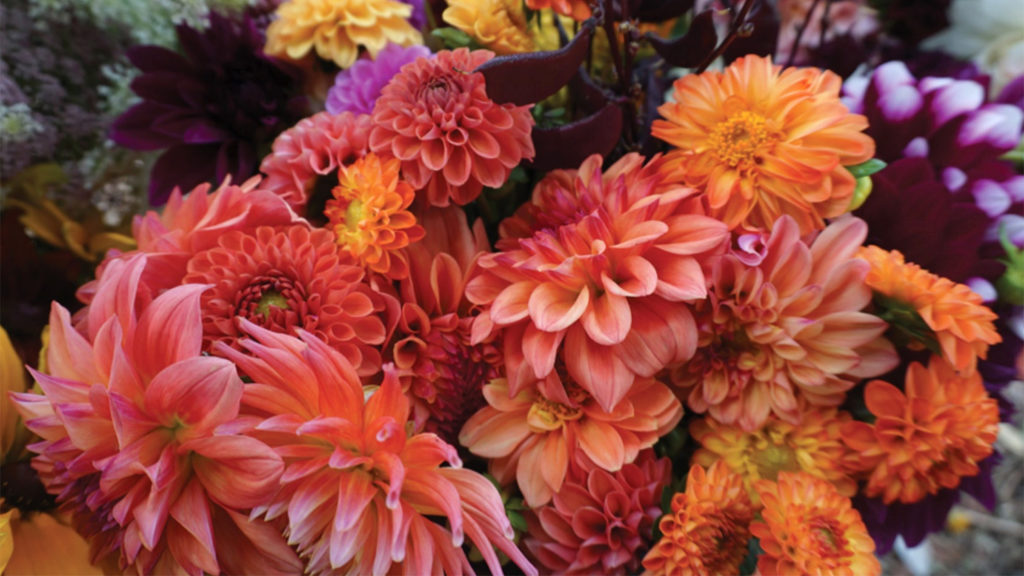Extending Cut Dahlia Vase Life
go.ncsu.edu/readext?590617
en Español / em Português
El inglés es el idioma de control de esta página. En la medida en que haya algún conflicto entre la traducción al inglés y la traducción, el inglés prevalece.
Al hacer clic en el enlace de traducción se activa un servicio de traducción gratuito para convertir la página al español. Al igual que con cualquier traducción por Internet, la conversión no es sensible al contexto y puede que no traduzca el texto en su significado original. NC State Extension no garantiza la exactitud del texto traducido. Por favor, tenga en cuenta que algunas aplicaciones y/o servicios pueden no funcionar como se espera cuando se traducen.
Português
Inglês é o idioma de controle desta página. Na medida que haja algum conflito entre o texto original em Inglês e a tradução, o Inglês prevalece.
Ao clicar no link de tradução, um serviço gratuito de tradução será ativado para converter a página para o Português. Como em qualquer tradução pela internet, a conversão não é sensivel ao contexto e pode não ocorrer a tradução para o significado orginal. O serviço de Extensão da Carolina do Norte (NC State Extension) não garante a exatidão do texto traduzido. Por favor, observe que algumas funções ou serviços podem não funcionar como esperado após a tradução.
English
English is the controlling language of this page. To the extent there is any conflict between the English text and the translation, English controls.
Clicking on the translation link activates a free translation service to convert the page to Spanish. As with any Internet translation, the conversion is not context-sensitive and may not translate the text to its original meaning. NC State Extension does not guarantee the accuracy of the translated text. Please note that some applications and/or services may not function as expected when translated.
Collapse ▲
Cut dahlias are perennially popular with growers and consumers because of their stunning beauty, and amazingly diverse colors, shapes, and sizes. Unfortunately, they also typically have a short vase life. We wondered if treating cut dahlias with plant growth regulators (PGRs) would increase vase life as with other flowers treated with cytokinin (iris, petunia, and wintersweet) or gibberellic acid (daffodil, lantern lily, and rose). We pulsed dahlia stems with benzyladenine (BA, a cytokinin), gibberellic acid (GA4+7), or both at the same time before observing flower quality and vase life.
We used flowers from two sources: 1) Three cultivars (‘Karma Amora’, ‘Karma Prospero’, ‘Nathalie G.’) dry packed and shipped from a commercial grower in Virginia (received 48 hours post cut, Fig. 1) and 2) Mixed cultivars held continuously in water from three ASCFG farmers close to NC State University (received 36 hours post cut, Fig. 2). We delivered PGRs to stems by recutting and placing them into the treatment solutions (Table 1) and holding them at 40±2 °F for 24 hours. Two control treatments were applied in the Ben A. Bergmann, Iftikhar Ahmad, John M. Dole North Carolina State University same way: tap water or Chrysal BVB. Post pulse treatment stems were recut and placed individually into jars in tap water for observation in conditions that mimic a typical home (70±2 °F under 200 footcandles of fluorescent light for 12 hours per day at 40-60% relative humidity).
Several PGR pulse treatments improved flower quality after 4 days in vase and extended vase life for both dry- and wet-handled flowers compared to tap water (Table 1). The combination of 20 ppm each of BA and GA resulted in the same or better flower quality after 4 days and the same or longer vase life than either PGR used alone at 20 ppm. The maximum benefit of the combined PGRs was achieved at a lower concentration for dry-handled flowers than for wet-handled flowers, perhaps because they took up more solution during the pulse treatment. Flowers pulsed with 2 ml/liter Chrysal BVB did not perform as well as the better BA/GA combinations.
Written by: Ben A. Bergmann, Iftikhar Ahmad, John M. Dole, North Carolina State University
Published by: The Cut Flowers Quarterly, Vol 31, No 1


